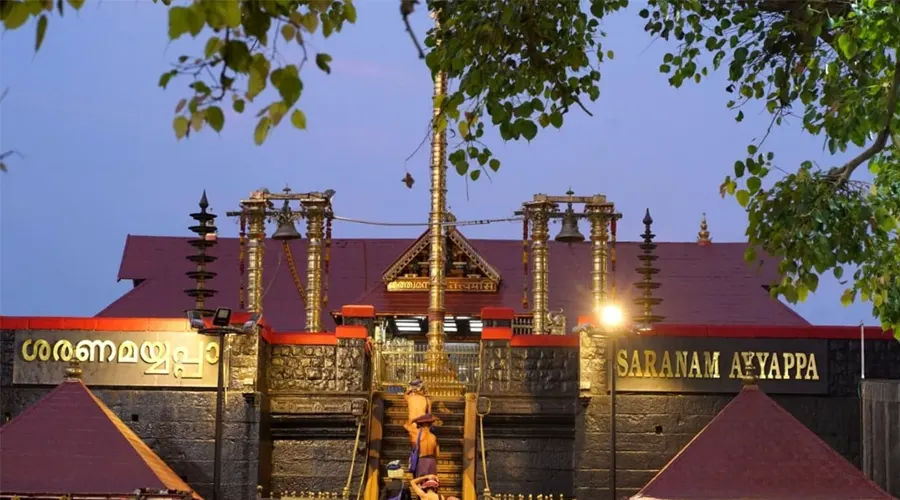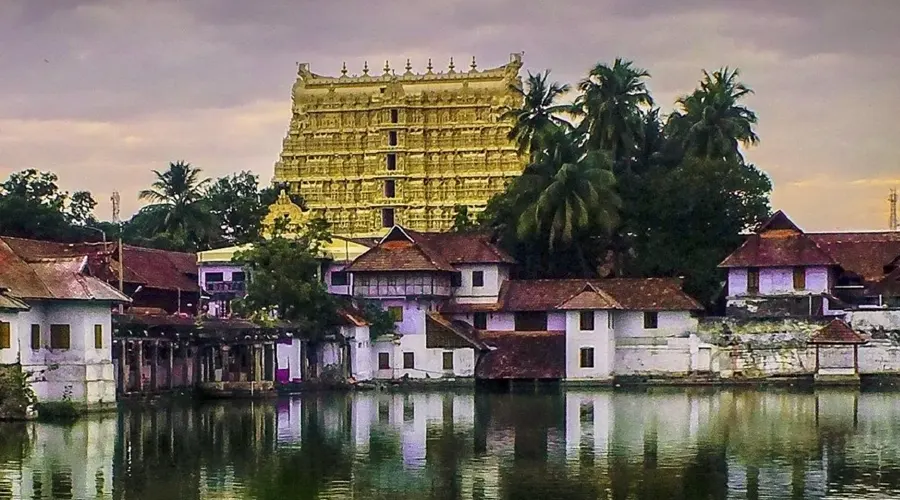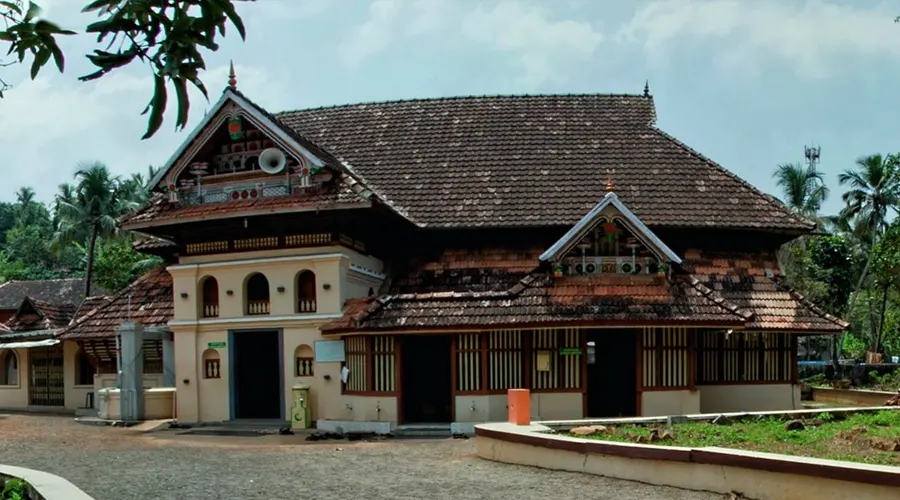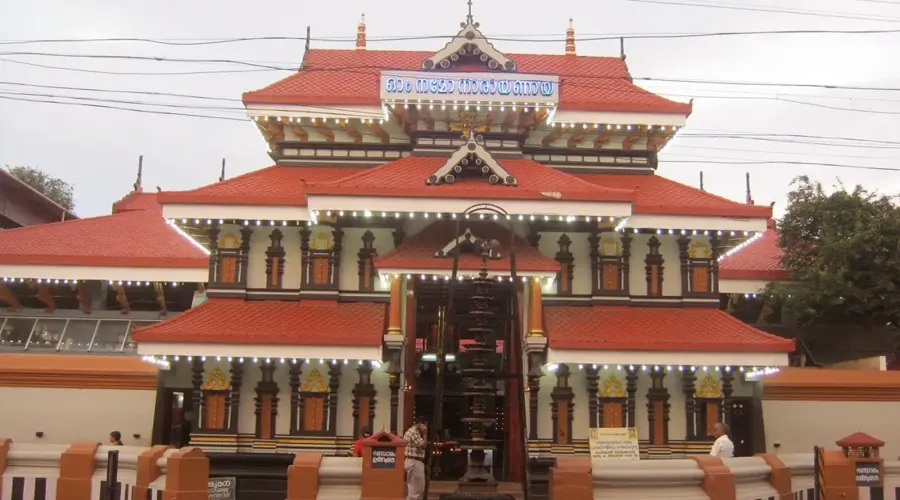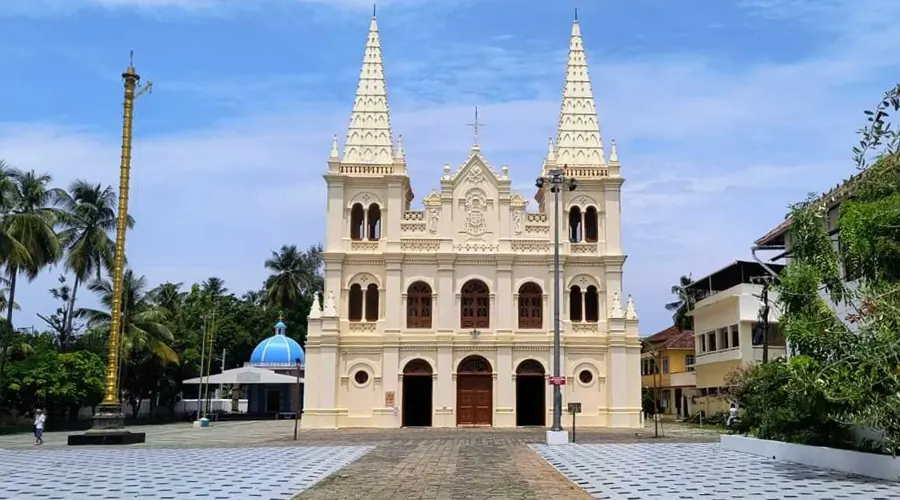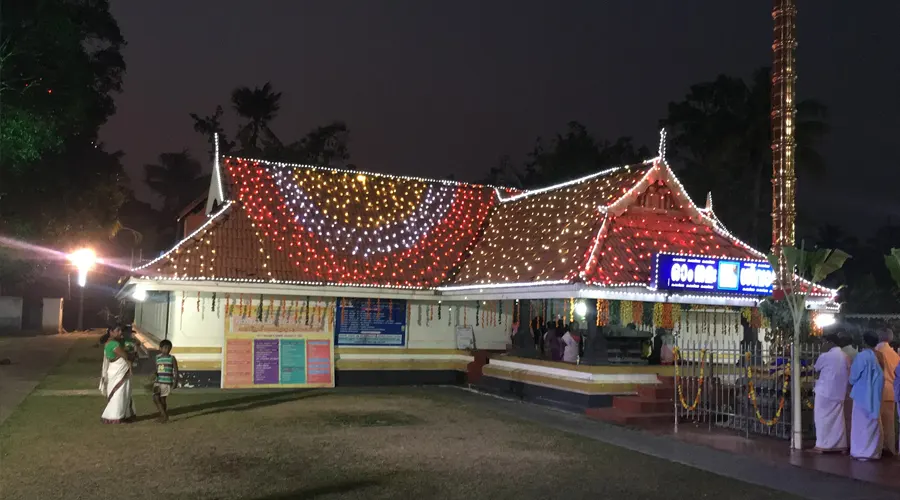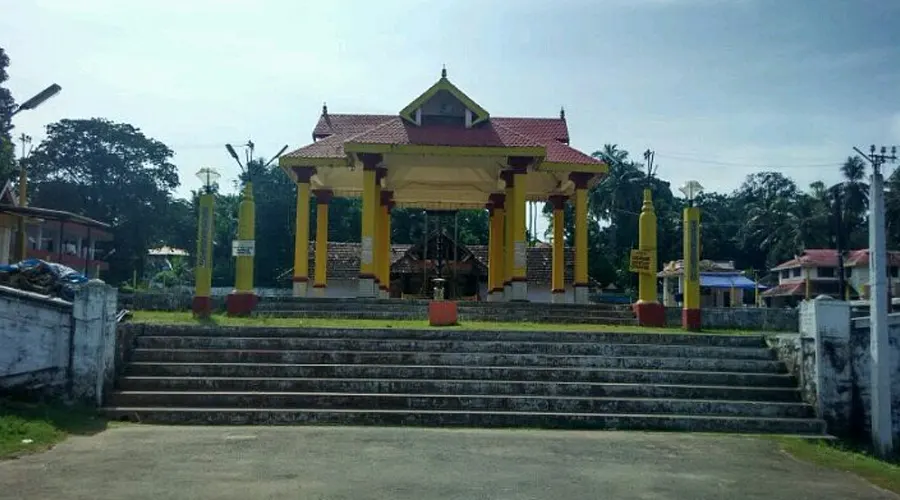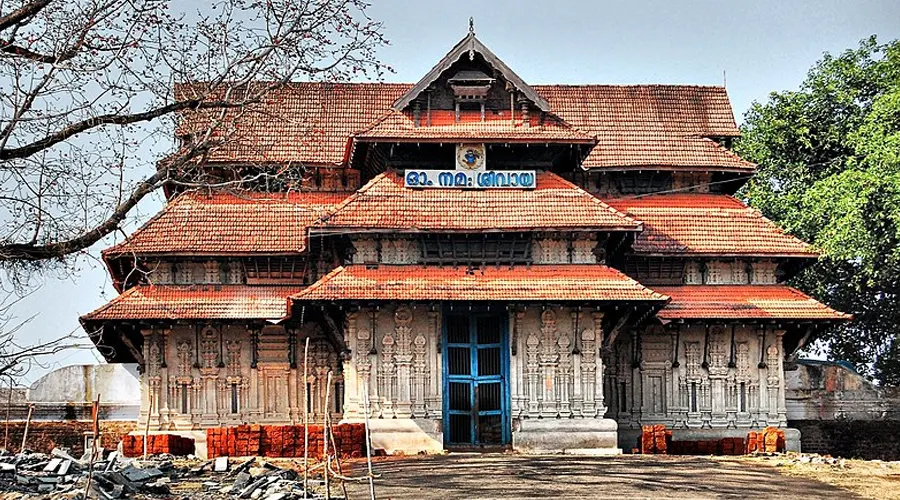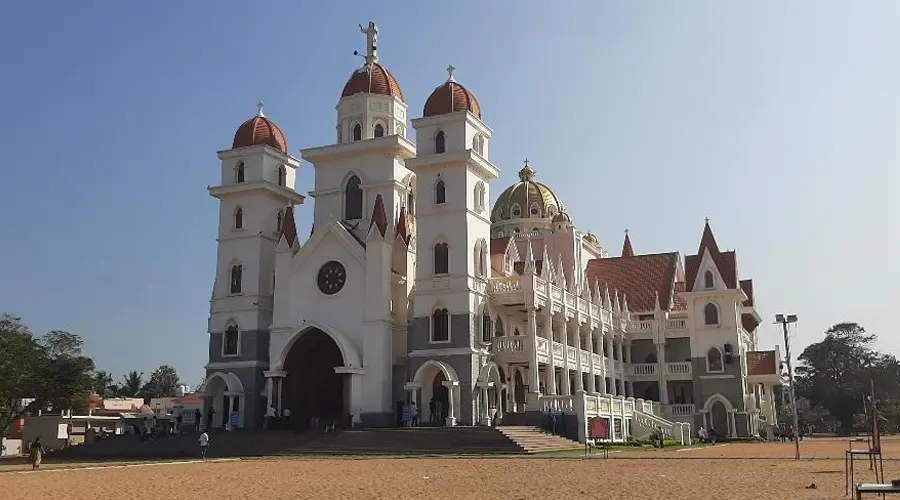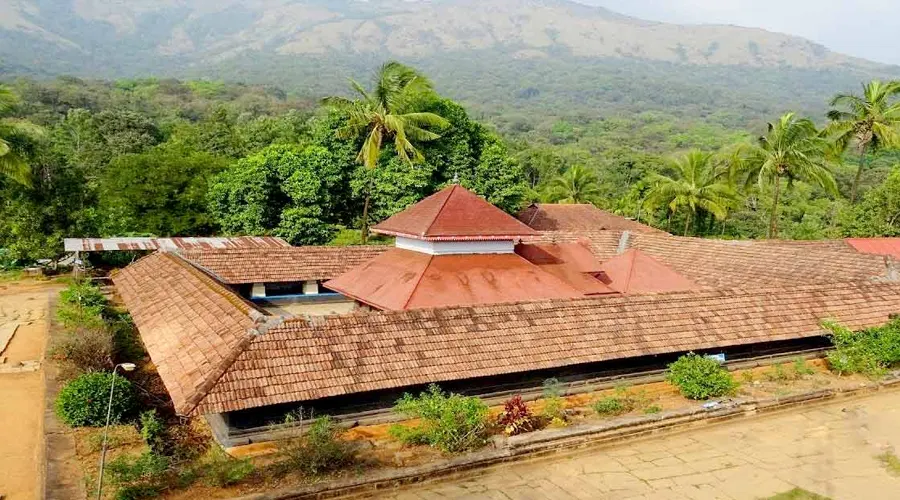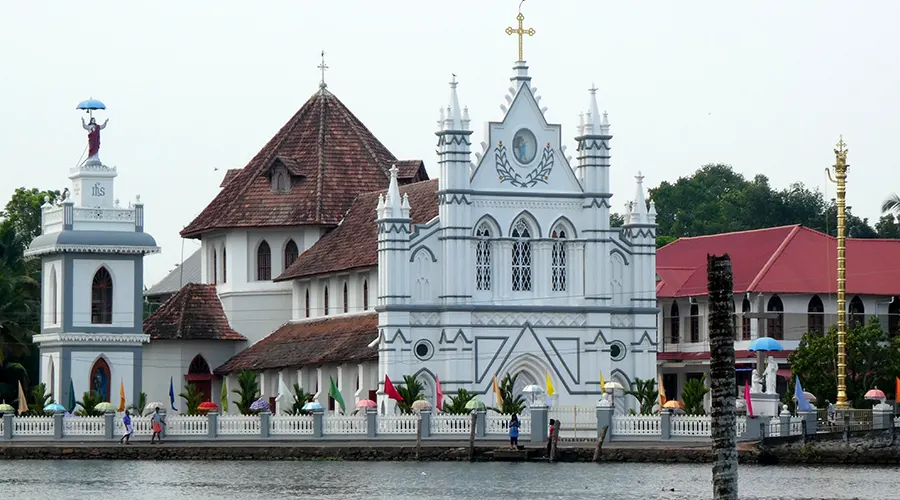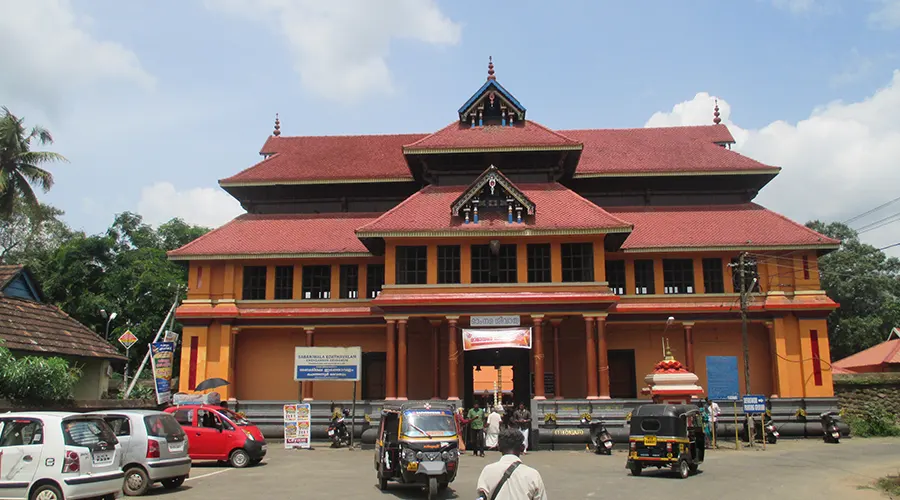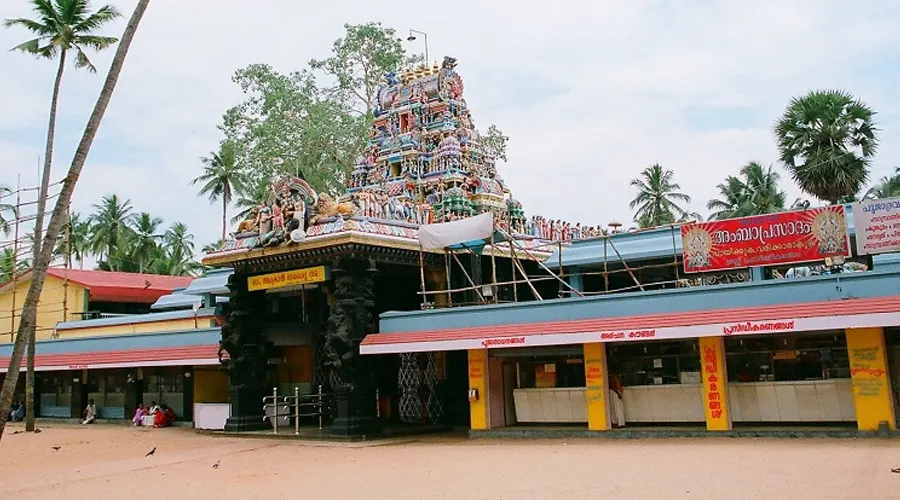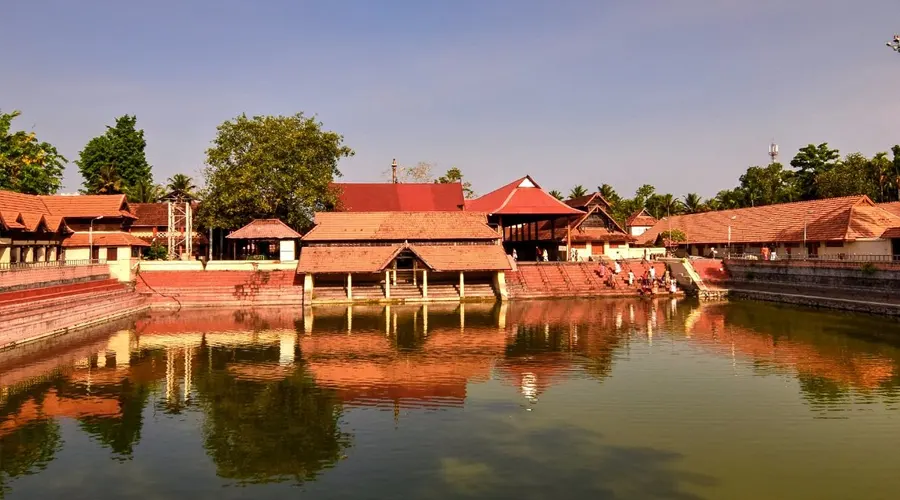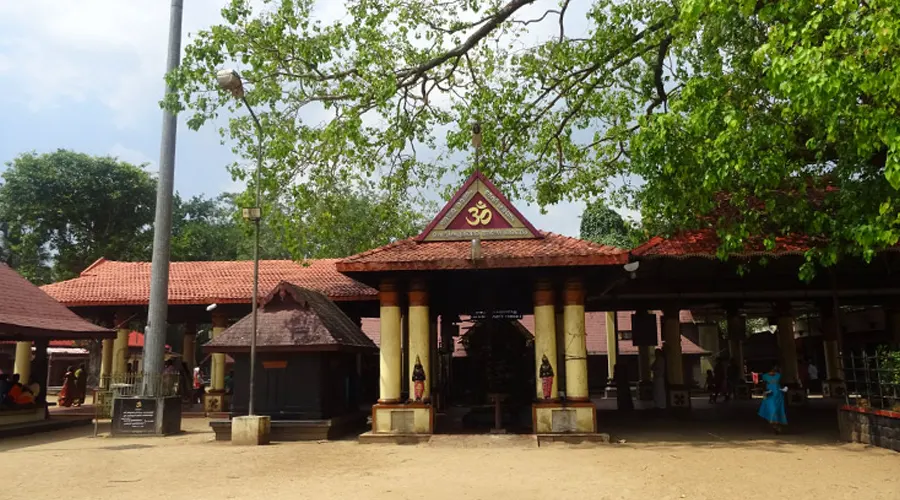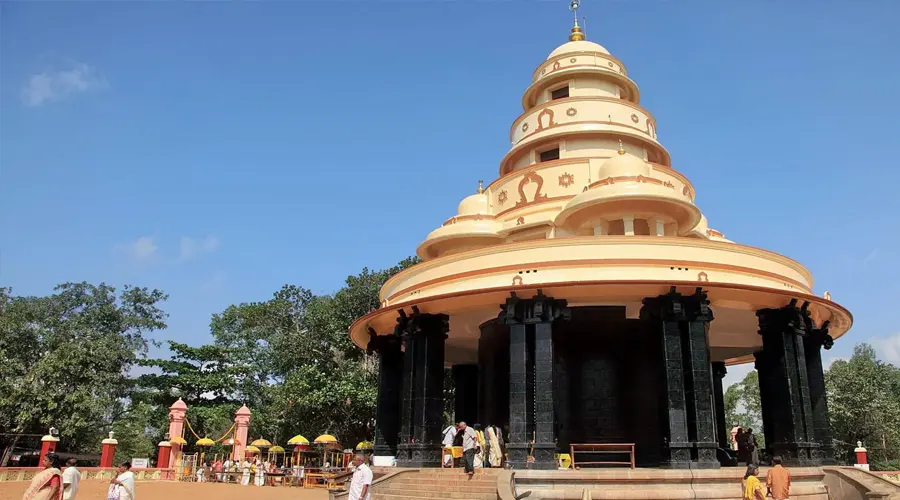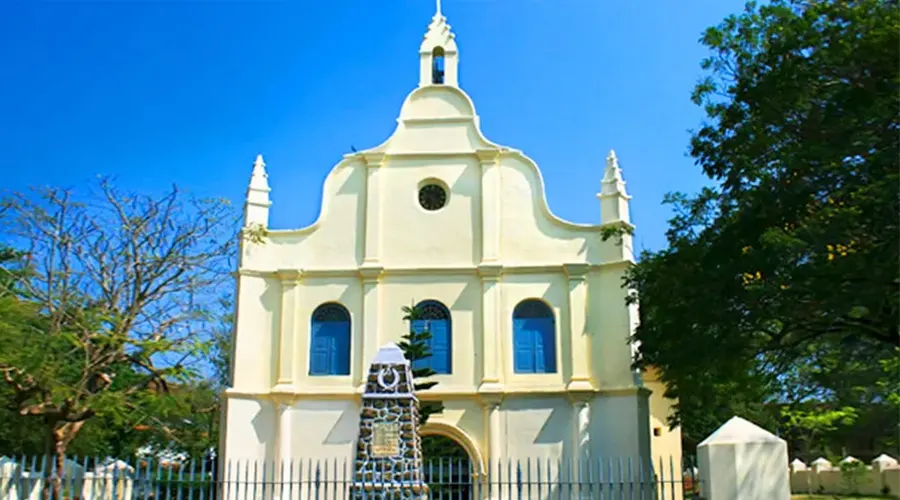Ayyappa Temple
The Sabarimala Temple, dedicated to Lord Ayyappa, is one of the most renowned and prominent temples of all the Sastha temples. This temple is significant not only for its religious elements but also because of the cultural, societal, and cultural elements attached to it. This is perhaps why this is one of the largest annual pilgrimages in the world; which attracts over 100 million devotees each year.
The temple is unique in the sense that it follows a liberal approach, allowing entry to devotees of all castes and religions. Every pilgrim is given the status of "Ayyappa" which maintains the actual spirit of "Tattvamasi" or "That is you". It means that the devotees are forms of God themselves.
Located in the Western Ghats of the Pathanamthitta District in Kerala, the Sabarimala Temple is situated on a hilltop, amongst 18 other hills, at a height of about 4,000 feet above sea level. To the left of this temple is a place dedicated to the Vavar, who was a Sufi and friend of Lord Ayyappa. This place is called 'Vavarunada' and is considered to be the epitome of religious harmony.
The devotees begin their trek to the revered temple with utmost dedication and sincerity at the dawn of the Vrichikam month. Those who have undertaken the journey would avow that the pilgrimage to Sabarimala requires mind power, physical stamina, devotion, and determination and is indeed a tricky one taken through trying and testing paths.
History of Ayyappa Temple
The worship of Sastha, a Hindu deity, is an essential part of the ancient history of South India. There are thus several Sastha temples located in South India and also all across the globe. As per history, the temple at Sabarimala is one of the five Sastha temples that were founded by Lord Parasurama, the other four being located at Kulathupuzha, Aryankavu, Achankovil Shastha Temple, and Poonambala Medu. At Sabarimala, the Sastha Lord is worshipped as Ayyappan or Dharmasasta.
It is believed that the prince of the Pandalam dynasty, who was an avatar of Lord Ayyappan, meditated at the Sabarimala temple and ultimately became one with the Divine. The place where he meditated is now the Manimandapam. Even after the temple was installed, it was mostly unreachable to religious devotees for about three hundred years. It was only in the 12th century when the Tamil king, Rajasekhara Pandiyan, rediscovered the original path to reach the sacred spot that the temple was renovated and became a famous pilgrimage site.
Architecture of Ayyappa Temple
The main temple stands majestically on a 40 feet high plateau and comprises a sanctum sanctorum with a copper-plated roof and four golden finials, two mandapams, and a flag staff. The main staircase to the Sabarimala Temple is made up of 18 sacred steps, with the temples of Karuppu Sami and Kadutha Swami, two of Lord Ayyappan's trusted lieutenants, positioned at the foot as guards.
The complex also houses the Pampa Ganapathi temple, Nilakal Mahadeva temple, and Palliyara Bhagavathi temple. The temple of Malikappurath Amma, which is considered to be as important as Lord Ayyappa himself, is also located nearby. In 1950, the temple was ruined by a mysterious fire that is believed to have been the doings of radical Christian extremists. Following this, the temple was rebuilt, and the original stone image was replaced by a 1.5 feet high panchaloha idol, made of an alloy of 5 sheets of steel.
Pilgrimage at Ayyappa Temple
The pilgrims follow a peculiar custom called Vratham for 41 days before the excursion. It involves strict maintenance of a diet free from meat and alcohol, wearing of mala or rudraksha, following celibacy, no cutting of hair or nails, and no smoking. They are required to wear plain traditional blue or black coloured clothes.
The pilgrimage that leads up to this temple requires immense perseverance and sacrifice. The traditional mountainous forest path, which leads to the temple, is 61 kilometers long. These days, people prefer to use vehicles to reach the Pamba river, which is somewhere on the path, and then begin trekking up the steep mountain.
The route is highly developed and well maintained, as compared to the earlier way which was just a trail amidst the dense forests. The route now has emergency shops and medical aid. Supporting aid is available to help the pilgrims climb the path, and elderly pilgrims are lifted by men on bamboo chairs for a nominal sum.
Women formerly did not visit the temple due to the hardships that they had to face on the journey. However, in 1991, the entry of women between the ages of 10 to 50 was banned during any period of the year. Police forces ensure that the order to ban entry is implemented and complied with, without any violations.

